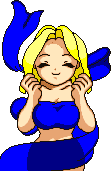thumb_up 1
thumb_down 0
Paramyxovirus also known as PMV is a pretty nasty disease which usually affects the nervous system of a bird. It can easily be mistaken for 'Newcastle Disease' as it exhibits similar outward symptoms. As far as I know, there is still no cure for Newcastle Disease as yet, but having said that, there are so few cases to run tests on to find a cure. Paramyxovirus is far more common, especially with pigeons and doves.
I am a long term finch keeper, and being in the field for many moons, I have come across many cases of Paramyxovirus. Most of the cases I came across were from people seeking help with birds which exhibit the symptoms, although a few of my own birds developed Paramyxovirus. Over the years, I have heard a lot of bullshit concerning Paramyxovirus along with hearing it can not be cured, or never breed the bird, also people suggesting put the bird to sleep. I find these people extremely narrow-minded, and lack compassion.
The burning question is, can it be cured? Well, I will explain. Firstly, most of the time when you see a bird rolling around on the floor, or twisting its head in an unusual manner, it may not actually be Paramyxovirus at all, but rather something else causing the symptoms. Inner ear infections, trauma of some kind, internal pain, parasites, strokes, heart issues, liver issues, injuries can cause these symptoms, so you would first need to try and rules these out. You could take the bird to an Avian Vet to get an absolute diagnosis to tell you if, and what, it actually is.
You need to remember, we live in a harsh world where life is real. Many birds died in the interest of science, and to find cures to protect future species. If it wasn't for people doing experiments on very sick birds, you'd not have any cures like you have today. When ever you treat a sick bird with as medication, remember many birds died before, so that you could treat that sick bird. Usually, once a bird is sick, it 'will' die, but trying something to give it a chance is better than letting it die a slow death.
People have been battling Paramyxovirus for decades without much success at all, some only curing the symptoms, and not the underlying problem. I wanted to join that battle myself, since I had two birds suffering with Paramyxovirus. Some treatments seemed to make the symptoms subside, whereas other treatments made the symptoms disappear completely, only for the symptoms to return 6 months later. I tried a lot of the regular drugs, and combinations, one were successful, although there were some improvements, and some made things worse.
After several years of trying many things, the thought occurred to me, I had the best results using Enrofloxacin (Baytril) 2.5% strength, but the issue was the durration. On the bottle or packet, it suggests 5–7 days. Well, I can tell you that for the first 6–7 days, there will be no visible signs of improvement at all. I found that on day 7, the symptoms reduced massively. You need to treat the bird 'full strength' 2.5% strength every single day without missing a day for 10 consecutive days. For best results, use a dropper, and put 0.2ml of Enrofloxacin (Baytril) directly into the beak at the back of the throat. If this works for you like it did me, then you could treat for 11 days (just to be sure) instead of 10 days. Do not treat with Enrofloxacin (Baytril) for more than 11 days, as prolonged usage can cause blindness in birds. Every bird I treated this way made a full recovery.
Paramyxovirus can not be carried genetically, this is nonsense, so fertile eggs from the once infected bird will be OK to raise. I must stress, It is important you clean the enclosure daily during treatment, or there is a risk of re-infecting. There should be plenty of room for the bird to move around with food, shallow water on the floor. Perches should be about 2 inches from the floor in case of falls. Fresh air, lots of natural daylight with lots of vitamins, minerals should be accessible at all times.
Birds with Paramyxovirus (PMV) rarely die from the disease itself, but rather end up getting stuck somewhere, become predated, drown, or starve to death as they are unable to control their orientation.
I hope this helps someone out there if they have a bird suffering with Paramyxovirus (PMV). If this helps you, please give this post a thumbs up to let us know. Thanks
